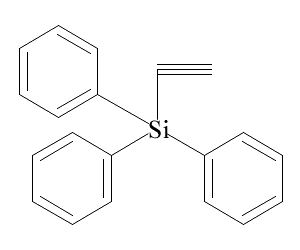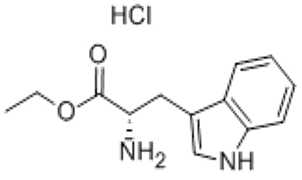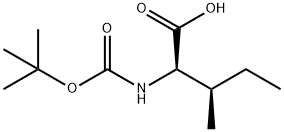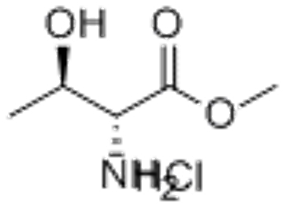(triphenylsilyl)acetylene(CAS# 6229-00-1)
| Hazard Symbols | Xi – Irritant |
| Risk Codes | 36/37/38 – Irritating to eyes, respiratory system and skin. |
| Safety Description | S26 – In case of contact with eyes, rinse immediately with plenty of water and seek medical advice. S37/39 – Wear suitable gloves and eye/face protection |
| WGK Germany | 3 |
Introduction
(triphenylsilyl)acetylene is an organic compound with the chemical formula (C6H5)3SiC2H. The following is a description of its nature, use, formulation and safety information:
Nature:
- (triphenylsilyl)acetylene is a colorless to pale yellow solid.
-It has a high melting point and boiling point and is a thermally stable compound.
-It is insoluble in water at room temperature, but soluble in organic solvents such as alcohols and alkanes.
Use:
- (triphenylsilyl)acetylene can be used as reagents in organic synthesis for the synthesis of other compounds.
-It can be used to prepare organic compounds containing silicon-carbon bonds, such as polysilacetylene.
Preparation Method:
- (triphenylsilyl)acetylene can be obtained by the reaction of triphenylsilane with bromoacetylene, and the reaction conditions are carried out at room temperature.
Safety Information:
- (triphenylsilyl)acetylene generally do not pose an immediate and serious threat to human health under routine laboratory conditions.
-But contact with skin and eyes should be avoided, because it may cause irritation to skin and eyes.
-During operation and storage, avoid the generation of dust and steam, as well as contact with oxygen or strong oxidants to prevent the risk of fire or explosion.
-When using and handling (triphenylsilyl)acetylene, take appropriate protective measures, including wearing protective gloves, glasses and laboratory coats.








